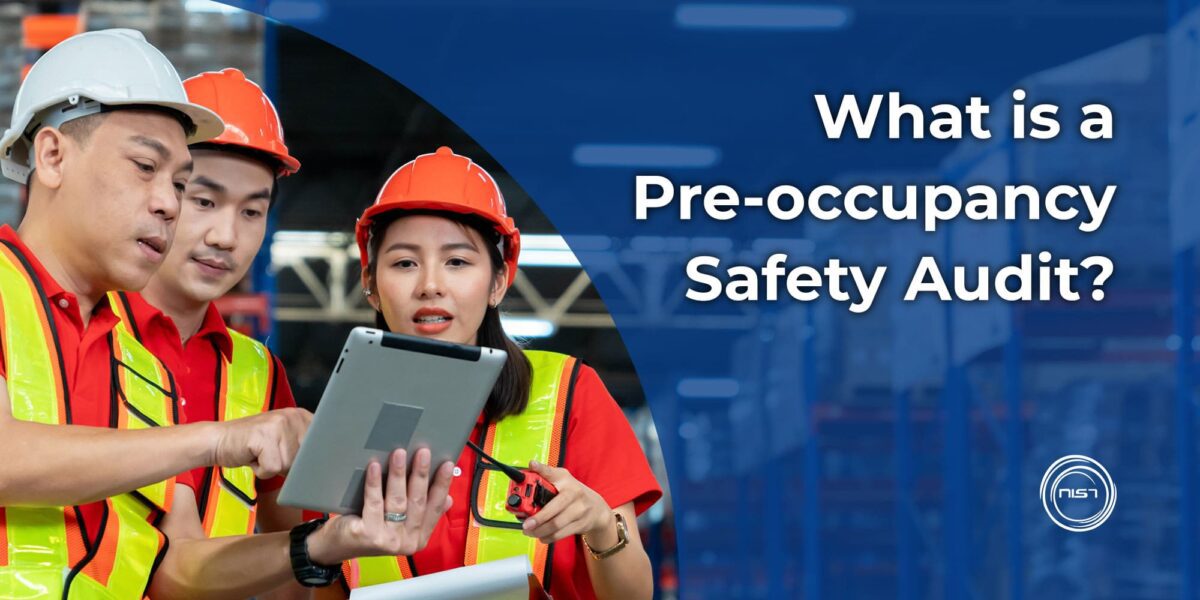What is a pre-occupancy safety-audit?

We live in a world where health and safety issues are becoming increasingly common. While you may not be able to stop all accidents, you can reduce the risks associated with them by performing a pre-occupancy safety audit. The audit is conducted by safety professionals to work out the health and safety risks associated with the property. Pre-occupancy safety audit is essential for organisations operating in high risk areas. The audit must be conducted by safety professionals, and the report must be made available to the management.
A pre-occupancy safety audit is a comprehensive survey that is performed at your workplace to identify potential hazards, and make recommendations for improvement that will help you comply with OSHA standards and increase worker safety while maintaining business efficiency and productivity. The Occupational Safety & Health Administration (OSHA) sets minimum health and safety standards for workplaces to reduce work-related injury, illness, and death among workers and to protect them from hazards. As the aim of the pre-occupancy safety-audit is to identify and assess the risk of injury, the focus is on the area and what could go wrong, or what risks need to be solved, mitigated before occupancy.
The requirements are generally in the form of a checklist to be performed by a qualified person who is responsible for assessing the safety of occupants and the working environment. This person (auditor) must report the audit findings to building management within a reasonable time period after the performance of the inspection.
In order to protect the occupants, the safety of the occupants, and the integrity of the facility in the building, the Pre-occupancy Safety-audit must be conducted before any commercial occupancy occurs. This is to ensure that the building is safe and that safety is not compromised.
During the pre-occupancy safety-audit, the auditor will also check to ensure that the facility is free of any known or unknown health hazards, such as pests or diseases. He or she will also inspect the air conditioning and heating system and make sure that they are operating correctly. The inspector will also make sure that all emergency exits, fire alarms, sprinkler system, smoke alarms and fire extinguishers are working properly.
The pre-occupancy safety-audit ensures that the building is safe for the occupants and that there are no hidden risks. If these hidden risks are found, the building can be closed or the occupancy may be delayed until the risk can be mitigated.
What is the process for conducting a pre-occupancy safety-audit?
When the auditor finds any hidden risks in the building, he or she should notify the workplace management. When the health risk is reported, the management will then decide whether or not it should be repaired or closed until the risk can be mitigated. This is because, the auditor is required to protect the health and well-being of the occupants in the building. The auditor must inform the management about the identified health and safety risks.
What are the requirements for conducting a pre-occupancy safety-audit?
An approved auditor can conduct a pre-occupancy safety-audit and make sure that the building is safe. The auditor should make sure that he or she is well trained to perform a pre-occupancy safety-audit.
Benefits of pre-occupancy safety-audit:
A pre-occupation safety audit is the first and most crucial step in ensuring that all the safety systems in your building are functioning well. It Saves time for the management, achieve compliance, and improves quality and service. Adds value to the workplace by preventing litigation, lawsuit, absence costs, and reputation loss. However, if a company does not have a thorough pre-occupation safety audit, there could easily be a safety hazard that can cause serious harm to employees and visitors, even death.
Conclusion: These audits also play an important role in reducing safety incidents, providing safe working places, and ensuring healthy and safety working environment for all employees.












Responses